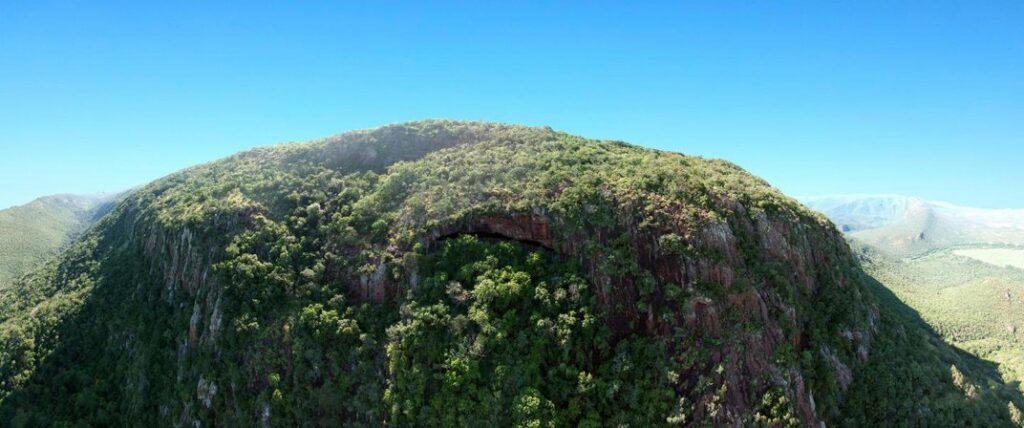200,000-Year-Old Bedding Found in South Africa May Be World’s Oldest
Archaeologists studying the interior of a cliffside cave in South Africa have found what may be the world’s oldest bedding, reports Cathleen O’Grady for Science magazine.

Dated to more than 200,000 years ago, the grass bedding—discovered in the Lebombo Mountains’ Border Cave—was placed atop layers of ash, perhaps to keep crawling insects like ticks at bay.
The findings, published in the journal Science, push the earliest record of human-constructed bedding back by at least 100,000 years. Previously, notes George Dvorsky for Gizmodo, the oldest known specimen was 77,000-year-old grass bedding found in Sibudu, South Africa.
Humans inhabited the Border Cave, so named because it sits near the border of South Africa and eSwatini (formerly known as Swaziland), sporadically between 227,000 and 1,000 years ago. More recently, the site has yielded an array of significant archaeological finds related to these early residents.
Lead author Lyn Wadley, an archaeologist at the University of Witwatersrand in South Africa, tells Gizmodo that excavations at the cave revealed “ephemeral fossilized grass.” She says the layer of grass was probably at least a foot thick and “would have been as comfortable as any camp bed or haystack.”
Wadley and her colleagues used scanning electron microscopes and infrared spectroscopy to identify fossilized plant materials. In addition to broad-leafed grasses, the team found traces of burned camphor bush, which is still used by people in rural East Africa as an aerial insect repellent, reports Ashley Strickland for CNN.

Because the ash is thought to have come from the same grass used in the bedding, the researchers suggest that Border Cave’s occupants periodically burned and replaced their mats with fresh plant matter. Per the paper, the ash repelled crawling insects by blocking “their breathing and biting apparatus and eventually [leaving] them dehydrated.”
Wadley says the findings are indicative of considerable sophistication on the part of early humans.
“Through the use of ash and medicinal plants to repel insects, we realize that they had some pharmacological knowledge,” she explains.
“Furthermore, they could extend their stay at favoured campsites by planning ahead and cleaning them through burning fusty beds. They therefore had some basic knowledge of health care through practising hygiene.”
Mixed in with the bedding, the team found ocher particles and flakes of stone possibly chipped off during toolmaking. The slivers of rock may indicate that the soft bedding was used as a seat for daily chores, while the red pigment may have rubbed off of individuals’ skin or other Stone Age canvases.
The researchers can’t be absolutely certain that ancient humans slept on the grass bedding. But Javier Baena Preysler, an archaeologist at the Autonomous University of Madrid who was not involved in the study, tells Science that this is the “most plausible interpretation.”
To estimate the proposed bedding’s age, Wadley and her team conducted radiocarbon testing on a pair of teeth discovered in the same strata of the cave’s sediments.
Speaking with Science, Dani Nadel, an archaeologist at the University of Haifa who was not involved in the research, deems this methodology “a bit shaky.” He points out that relying on just two teeth rather than analysis of the actual plant remnants could have yielded inaccurate dates.
Since the final layer of plant bedding was left unburned, the archaeologists suggest that the humans who had once lined the Border Cave’s floor with soft, green grass eventually abandoned the site.





